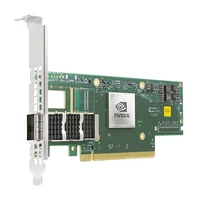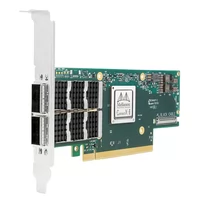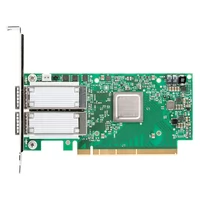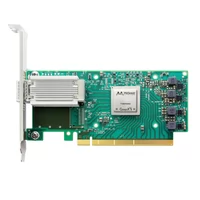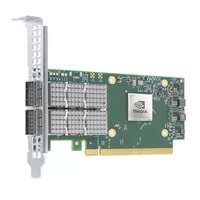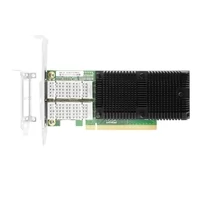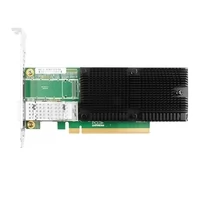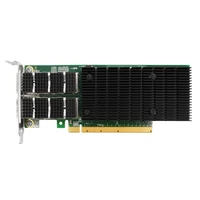As customer touchpoints, self-service portals have gained immense importance in the last two decades. Fast, promising, and easy- these have been significant advantages, especially with the Internet being available all around. In other words, they enhance satisfaction and loyalty towards a certain center or organization. However, portals appear valuable only when properly implemented within customer support activities. Such complexities undermined their applicability as efficient self-service conveyor systems and support portals. It could also be claimed that some of such centers are moving towards becoming online portals. Centra Commerce switched its client base to ICT vendors.
Table of Contents
ToggleWhat is a 100GbE Network Adapter?
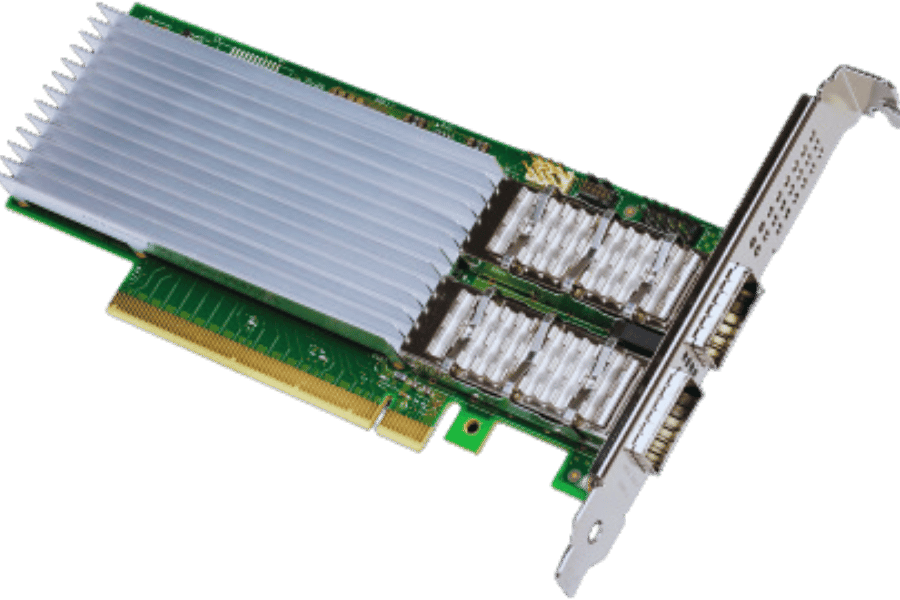
Understanding Ethernet Network Adapters
Ethernet network adapters, technically called network interface cards (NICs), are the crucial elements that allow devices to connect to a network for communication and information exchange. All these adapters work by modulating or adapting data excited on them into current, which can travel through copper cables, fiber optics, or other media. In the case of 100GbE technology, specially designed on the parts of these adapters to have a data rate of up to 100 gigabits per second, high-performance services such as video streaming, data upload and download, and cloud services, among many others, are supported. Many factors, such as throughput, latency, or compatibility with already installed components, affect the selection of a method for connection to the network to achieve the best operation of the whole system.
Main Features of 100GbE Adapters
100GbE adapters are packed with numerous important components which improve their functionality and operation in high-speed networking:
- High Throughput: Offering the bandwidth of close to 100 Gbps these adapters do not pose any hurdles in data transfer which makes them well suited for data applications with heavy bandwidth usage.
- Low Latency: 100GbE adapters are designed in such a way that includes minimal delays in transmitting data thus any application requiring real time interactions like online gaming, and transactions equipped with these adapters are more responsive.
- Scalability: Supporting of multiple ports of many models or supporting different technologies means that network managers do not have to wait for the traffic levels to reach a critical point before expanding capacity.
- Advanced Protocol Support: Extending beyond the standard Ethernet protocol, the 100GbE adapters can tackle Ethernet over MPLS and VLAN, thus operating effectively in varied networks.
- Flexible Connectivity Options: These packages generally consist of both and/or copper and fiber optic connection options for supplementary active network connections.
- Energy Efficiency: With every 100GbE there are usually some power saving technologies incorporated in so that most of the 100GbE adapters are designed to be energy efficient, hence lowering operational expenses in large expanses of data centers.
These features are useful to both network architects and IT personnel since they can help them understand how best to implement certain features to achieve the preferred performance level of the networks they serve.
Benefits of Using a 100GbE Network Card
Deploying a 100GbE network interface card provides several advantages that might improve the network performance and the organization’s operation. To begin with, the increased bandwidth makes it possible to contact a data center and transfer data, and these applications respond more quickly, which is useful mostly in data-aware domains like cloud computing, video editing and streaming, and expansive data analytics. In addition, better management of available resources and schema, such as load balancing, also comes into play, contributing to better network performance. Thirdly, the availability of 100-gigabit Ethernet cards can allow the company to build the network and its resources without worrying about the sophisticated nature of data the company is likely to encounter soon. So these network cards also enable the high speeds of data transfer especially in the 100G QSFP28 connectors. Enhanced virtualization technology allows the support of many more virtual machines with low latencies, maximizing cloud services and enterprise environments’ bandwidth throughput.
How to Choose the Best 100GbE Network Interface Card?
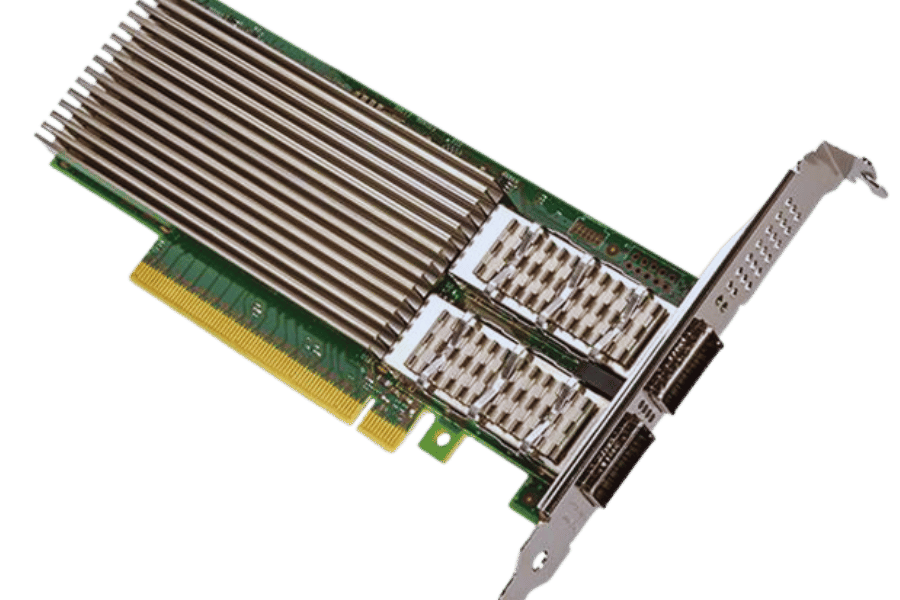
Comparing Intel® and Mellanox Options
In the case where it is necessary to select a 100GbE network interface card from Intel® or Mellanox, it is advisable to assess such factors which can have an impact on the network as a whole.
- Performance: The performance of the 100GbE solutions provided by Intel® and Mellanox is at the top; nevertheless, users of Mellanox cards highlight offloading features in particular which help in reducing the CPU load whenever data processing is intensive. Without a doubt, there is a large focus on Intel® network cards which are more compatible with many operating systems because they have many drivers.
- Ecosystem Integration: These products are more often than not found in an integrated system comprising other Intel Technologies, so adequate support for Intel servers and storage is guaranteed. This company also relocates well towards projects that incorporate NVIDIA GPUs, which creates great opportunities for high-end computing and AI-centric businesses since Mellanox is now a member of NVIDIA.
- Cost: The pricing structure can be aptly described as contrasting between the two brands. Here, however, it is more likely that prices would be higher for Mellanox cards due to the up-market features. In contrast, lower costs are offered on the purchase of Intel® cards, especially when bundled with other Intel hardware, such as the e810 ethernet adapter.
As a final point, the decision on whether to go for Intel® or Mellanox options should depend upon the type of workloads undertaken, the type and level of integration envisaged into the existing infrastructure, and the price. Analyzing these criteria will result in a choice within the network performance expectations.
The Role of QSFP28 in Network Card Performance
The QSFP28 Module, also known as Quad Small Form-factor Pluggable 28, is very useful in increasing the network card’s capabilities by allowing fast data transfer with a capacity of one hundred Gbps per port. This improvement is quite useful in data centers, which need to incorporate higher data rates to satisfy the requirements of cloud computing, data analysis, and artificial intelligence applications. The QSFP28 modules have several operational modes whereby they can adapt to operation either in 100GbE, 40GbE, or even 25GbE with pleasing applications and utmost flexibility and scalability.
In addition, the size of the QSFP28 also assists in promoting high-density connections that utilize less space and power in the network racks. This document also contains several features for dial tone integrity which are important to prevent data loss over the large distances needed for high speed networks. As the need for quicker and more acute networking operations increases for most corporations, the deployment of QSFP28 technology within the network cards comes as a logical approach directed at safeguarding key assets from future threats while improving performance management and performance.
Dual Port vs Single Port: Which is Better?
A number of factors may be addressed when comparing dual port and single port network cards owing to the fact several factors are not constant with regard to industry standards and user needs. Apart from the higher redundancy that comes with a dual port network card, it has an improvement in throughput as it’s capable of transmitting data from both ports. This is especially useful in high-bandwidth applications like cloud services and large enterprise networks. Furthermore, it is possible to set link aggregation or failover solutions thanks to dual ports, meaning that network up-time is further improved.
Connecting a single port network card may be satisfactory in less demanding systems or in small networks where cost and simplicity are the two main objectives. Such cards usually consume low power and thus are suited for simple settings. All in all, dual or single port configurations should bear in mind the network infrastructure needs, traffic patterns, and budget constraints. For the companies that are planning on growth or on the increased data consumption within the organization, the dual port technology might represent a stronger long term approach as it is scalable.
How to Install a 100GbE NIC?
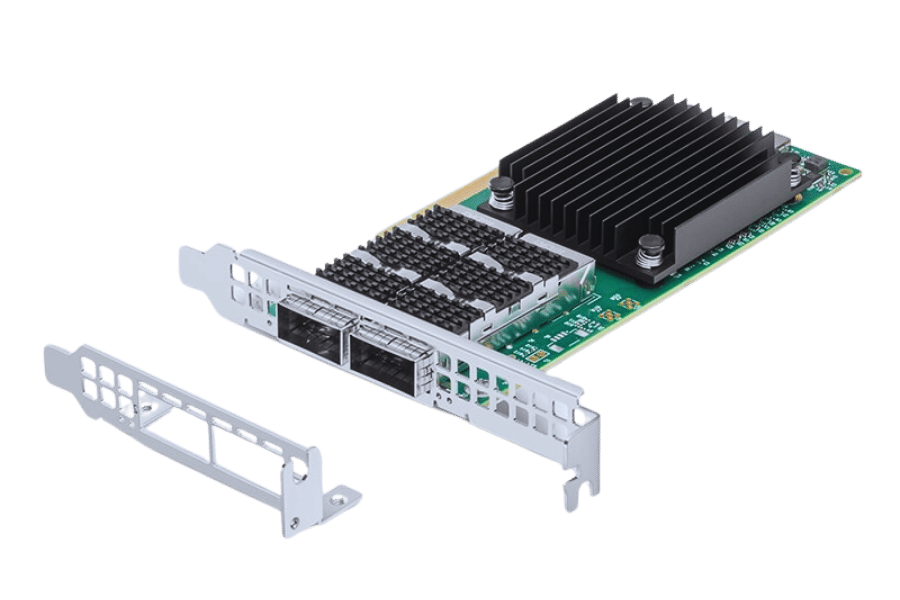
Step-by-Step Installation Guide
- Preparation: First and foremost, if this unit is powered on and connected to electrical supply, switch it off and unplug it. A few tools will also be needed, an anti-static wrist strap is one of them, if it is available.
- Locate the PCIe Slot for the 100G QSFP28 card.: It is necessary to insert the 100GbE Network Interface Card (NIC) to an appropriate PCIe slot on the motherboard. In doing so you may need to refer to the motherboard manual as to which type of slots are compatible.
- Remove the Expansion Slot Cover: If applicable, remove the plastic or metal cover of the chosen PCIe slot of the back panel. Store the screws you have removed for the time being if you plan to use them later on.
- Insert the NIC: Gently hold the 100GbE NIC and position it over the PCIe slot, press down all the way until it is fully in place.
- Secure the NIC: To do this, let the removed screws be used as fastening devices to the NIC which is placed in the expansion slot.
- Reconnect Power: Connect back the server or workstation and switch on the power to the server or workstation.
- Install Drivers for the ConnectX-5 EX EN network interface to ensure optimal performance.: After the operating system has successfully booted, drivers for the 100GbE NIC should be installed. The appropriate drivers are available on the manufacturer’s web page.
- Configure Network Settings: That is why, the network settings of the given operating system should be given the right accessible network interface to meet the network requirement.
- Establish Connection: Test the network connection to ensure that the installation is done correctly.
Compatibility with PCIe Slots
The selection of 100GbE network interface cards requires that users remember what PCIe slots are available on their respective motherboards. Most of the current versions of 100GbE network cabinet solutions adopt PCIe 3.0 or higher versions, which offer just the right amount of bandwidth. It is important to check that the motherboard contains an x16 or x8 PCIe connector type as such connector types characteristically handle the bandwidth levels in more than 100GbE cards. Furthermore, lane configuration must also be taken into account since some motherboards will have slots of varying physical widths depending on how many lanes the e810 ethernet adapter uses. Generally, look at the motherboard specifications granting practicality and fewer issues during installation or compatibility with the NIC, including its supported PCIe version and lane allocation for the NIC to perform the best.
Configuring the Network Adapter
These exact steps need to be followed in configuring the network adapter 100G QSFP28 setup:
- Access Network settings: Bring in the network settings panel from the operating system.
- Select the NIC: Pick out the newly installed 100GbE NIC from the list of network devices available as being the resident computer or laptop.
- Assign an IP Address: Two options are available: either assign a static IP address or set the configuration to enable DHCP to allocate an IP address based on whether static addressing is preferred.
- Set Subnet Mask and Gateway: For effective routing, it is important to mention a subnet mask and a default gateway when using the ConnectX-5 EX EN NIC card.
- DNS Configuration: Input the DNS servers to be used for the name resolution.
- Apply Changes: Any changes made should be saved or applied for them to take effect.
- Verify Configuration: The final step involves using command-line tools (ping, ipconfig) to check the adapter’s functionality and proper configuration.
What are the Use Cases for a 100GbE NIC?
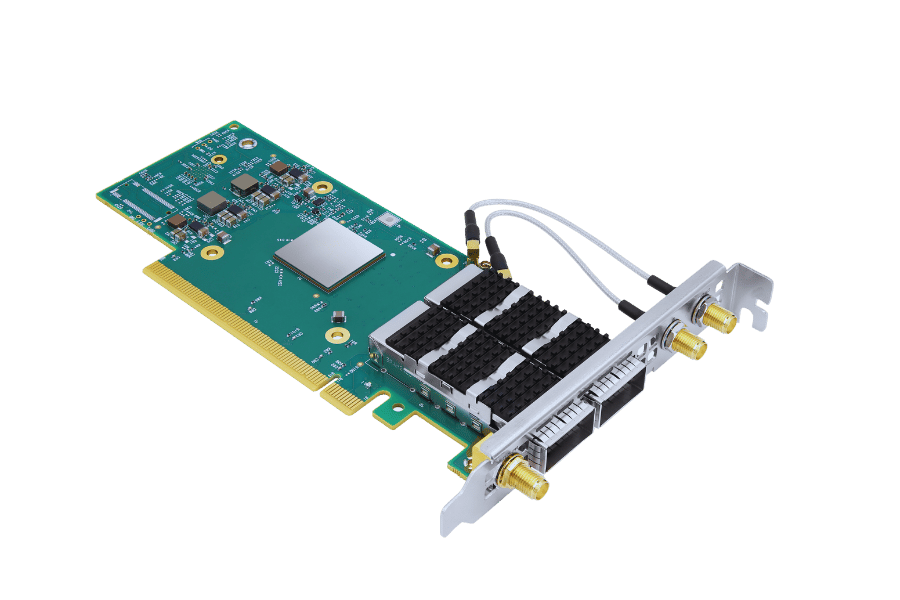
Applications in Data Centers
Many applications are supported by 100GbE Network Interface Cards (NICs) deployed within data centers, which are characterized by high bandwidth and low latency. Examples of such applications include;
- High-Performance Computing (HPC): It alleviates the timeable problem in transferring data in very data bottle-necked processes such as financial modeling and scientific simulation.
- Data Aggregation and Storage: It helps the users to have quick access to and process large amounts of data that have been stored in a central repository.
- Virtualization: Managed bandwidths enable the hosting of more Virtual machines with a resource-on-demand performing better in a Virtualized environment.
- Cloud Services and Deployment: Providing throughput needed to satisfy user demand and run several applications concurrently speed up and makes the deployment of cloud infrastructure more elastic.
- Big Data Analytics: It allows the movement of very large amounts of data which is vital for fast and dependable business decision processes.
In summary, high-speed performance in data processing is crucial for many applications in modern data centers, which is why 100GbE NICs are necessary materials.
High-Performance Computing Needs
HPC appropriate requires complex arrangements in hardware and network particularly the ConnectX® – 5 EN network interface card in order to perform computations and analyze data of enormous size. The first demands in this area are:
- Scalability: In the case of the HPC systems, the resources should be scaled vertically with efficiency to meet the increased need for computational resources and additional resources should be added without degradation of performance.
- Low Latency: The distance between each of the nodes affects the general synchronous processing of the components, and hence, the nodes have to be as close as possible without any major delays. Network layouts should, therefore, be properly planned to have little or no interference during information transmission delay.
- High Bandwidth: Some applications in this category demand the transfer of high amounts of data within a short time and hence high bandwidth networks are required to sustain the amounts of data transferred during the computation processes.
- Most Usage Cases of the ConnectX-square 5 EN Network Interface Card calls for reliability. Redundant systems and fault tolerance would be necessary to prevent down time and guarantee that the operations being processed would continue as intended even for processes such as long simulations which will take a long time to complete.
- Interconnectivity: Sufficient HPC clusters are not possible without using advanced interconnect technologies (e.g., InfiniBand, advanced Ethernet), which help communicate the cluster nodes and enable the efficient execution of data and tasks.
Meeting these requirements is essential as it allows correct utilization and work with HPC centers, which impacts the effectiveness and outcome of high-performance computing projects.
Networking in Large Enterprises
In big organizations, the importance of networking cannot be over-emphasized as it is essential for smooth communication, collaboration, and effective operations among all the departments. Underlying factors include:
- Architecture Design: The network structure is created in a particular form, mostly utilizing a hierarchical structure, contributing to the ease of traffic flow and expandability. The standard includes the core, distribution, and access layers to provide high performance and be easy to manage.
- Security Protocols: At this stage, protecting sensitive data from malicious attacks through the use of firewalls, intrusion detection setups, and virtual private networks, as well as meeting certain requirements, is critical.
- Network Management: Features of enhanced network management include supportive troubleshooting tools that aid IT in monitoring the system, enabling them to prevent and manage likely problems, appropriate bandwidth control, and resource deployment.
- Cloud Integration: In the quest of moving to the cloud support, these networks need to be able to ameliorate such concerns because there will now be a mix of on site and off site resources.
- Performance Metrics are crucial when evaluating the efficiency of the ConnectX-5 EX EN network interface. Performance metrics, including latency and packet loss measures, are necessary for managing the network with the view of making or reducing certain adjustments to optimize efficiency.
When these networking dimensions are addressed, great business organizations are in a position to improve operational effectiveness, build readiness for growth, and enable envisaged secured and timely communication with their 100 G QSFP28 infrastructural layout.
What are the latest 100GbE network cards on the market?
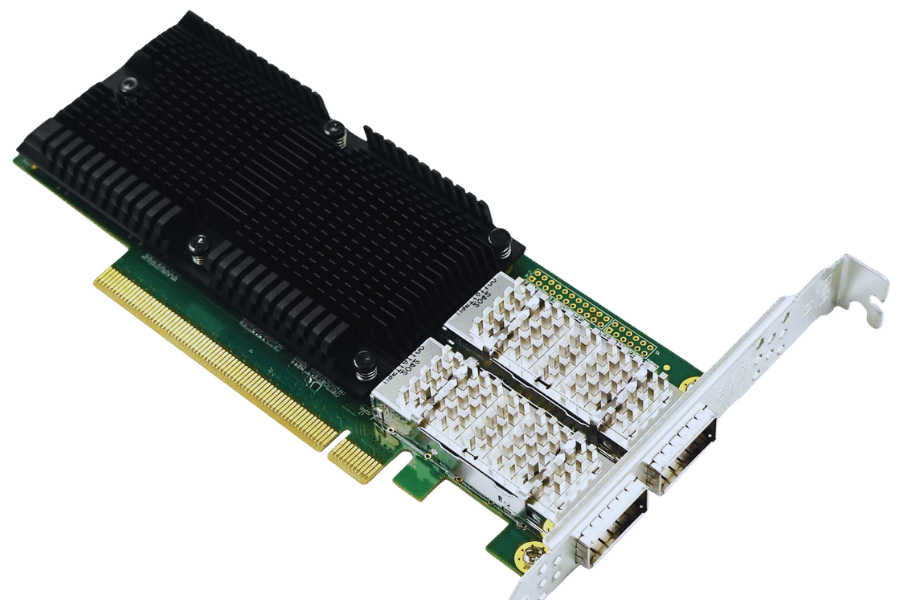
Introducing the Intel E810-CQDA2
The Intel E810-CQDA2 network card is one of the latest entries in the 100 Gigabit Ethernet (100 GbE) category of adapters designed especially for high-end computing and for data centers. This Intel Ethernet card features dual 100GbE ports for high bandwidth and very low latency applications. The ConnectX-5 EN would easily work in any network since it supports both conventional and software-defined networking. Besides, considering the performance of the E810-CQDA2 enhances security features and offers improved offloading so as to boost network performance, making it suitable for companies that want to upgrade their networks.
Reviewing the NVIDIA Mellanox MCX516A-CCAT
The NVIDIA Mellanox MCX516A-CCAT is a rapid 100GbE network adapter designed for fast data movement in the cloud and enterprise data centers. This card has two 100GbE connectors and supports numerous protocols such as RDMA over Converged Ethernet (RoCE) that puts the data transfer efficiency at a different level by making communication very fast about its computing capabilities. With this technology built, the NVIDIA Spectrum switch increases the configuration options available on the network, and at the same time, the advanced processors manage the more sophisticated loads. Apart from that, the MCX516A-CCAT has sophisticated and effective security systems that assure both the integrity and confidentiality of the information, which makes it suitable for the enterprises that intend to upgrade their networking systems with advanced technologies.
Comparing PCIe 3.0 and PCI Express 4.0
PCI Express 3. x and PCI Express 4.0 are revisions of the PCI Express Interface Specification, whose main purpose is to provide high-speed data exchange between the motherboard, covering various connectors with graphics and network cards. The main differentiating feature concerning PCIe 3.0 is the data rate, which is still quite high but contextual to PCI Express 4.0, which has doubled the slot data rate from 1 GB/s per lane to 2 GB/s per lane, pushing up the total bandwidth to as high as 64 GB/s in a 16 lane setup. This increase in throughput makes it possible for advanced game applications, data flow applications, and high-end video applications to operate effectively using PCIe 4.0. Besides, PCIe 4.0 interoperability with PCIe 3.0 means that users will not be locked out of new technology due to obsolete system ports.
Reference Sources
Frequently Asked Questions (FAQs)
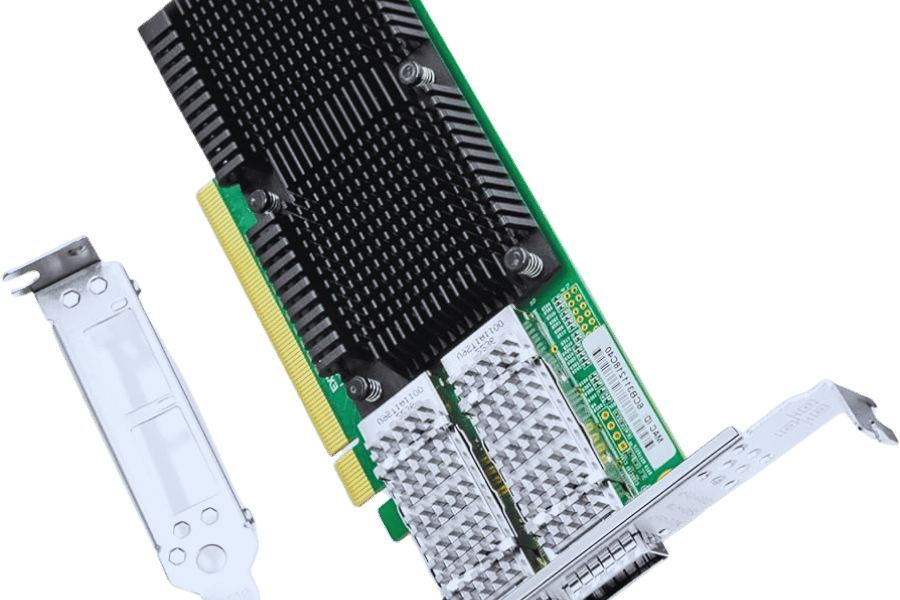
Q: What is a 100 Gbps Ethernet connection?
A: A 100GbE network interface card, also called a 100GbE NIC, is a type of communications adapter card used for the very fast transfer of data at the rate of 100 gigabits per second. The cards are primarily used in data centers and high-performance computer environments.
Q: What are intel w810-cam2 NIC specifications?
A: The Intel E810-CAM2 NIC supports 100 GB ethernet, low profile, advanced controller features, and more. It is built for optimal throughput and minimum latency, which are necessary in sophisticated computer network applications.
Q: How does a dual-QSFP28 nebulizing adapter? edit differ from a mere single port version?
A: A dual-port QSFP28 adapter card incorporates two 100 gigabit ethernet ports, providing higher backup facilities and enhanced bandwidth capabilities than a single-port mode, which only has up to one port.
Q: Why do 100G NICs use PCIe 4.0 x16?
A: PCIe 4.0 x16 is a notable improvement to PCIe 3.0 in terms of speed of data transfer and bandwidth, hence why it is desired for 100G NICs to maximize productivity and efficiency.
Q: Are there any scenarios when a 100GbE network card is valid?
A: Indeed, the 100GbE network cards are more easily utilized in HTF, large-scale data centers, cloud applications, and scientific industries that require high-speed and low-latency capabilities.
Q: What is the difference between ConnectX-5 and ConnectX-6 Network Interface Chip products by Mellanox?
A: The Mellanox ConnectX-6 NIC is superior to the previously designed ConnectX-5 due to its better performance, better offload functionalities, and additional features. It provides advanced RDMA technologies and greater IT performance for data-centric applications.
Q: What does the term ‘RoHS compliant’ refer to regarding Network Interface Card?
A: A RoHS-compliant designation on a network interface card means that the designer has adhered to the restrictions on specific hazardous substances directives, hence making sure that the device does not contain dangerous materials such as lead, mercury, and cadmium, which are harmful to the environment.
Q: Does a 100GbE network interface card support optical and copper cables?
A: Yes, many 100GbE NICs aimed at QSFP28 ports can operate on either multicore entrenched decked with punctuate cables or optical cables, allowing variation in the network architecture.
Q: Why is there a tall bracket on the rear side of a 100GbE network card?
A: A tall bracket is used to install the Network Interface Card (NIC) on a standard server motherboard without it sliding off. They help maintain proper orientation and clarity of the heads, especially when used in high-density server configurations.
Q: What is the role of an Ethernet network interface card (NIC) in improving network performance?
A: An Ethernet NIC promotes rapid network communication and data transmission processes, hence optimizing time and increasing volume, which is essential in most high-performance applications and effective network utilization.
Related Products:
-
 NVIDIA NVIDIA(Mellanox) MCX653105A-ECAT-SP ConnectX-6 InfiniBand/VPI Adapter Card, HDR100/EDR/100G, Single-Port QSFP56, PCIe3.0/4.0 x16, Tall bracket
$965.00
NVIDIA NVIDIA(Mellanox) MCX653105A-ECAT-SP ConnectX-6 InfiniBand/VPI Adapter Card, HDR100/EDR/100G, Single-Port QSFP56, PCIe3.0/4.0 x16, Tall bracket
$965.00
-
 NVIDIA NVIDIA(Mellanox) MCX653106A-ECAT-SP ConnectX-6 InfiniBand/VPI Adapter Card, HDR100/EDR/100G, Dual-Port QSFP56, PCIe3.0/4.0 x16, Tall Bracket
$828.00
NVIDIA NVIDIA(Mellanox) MCX653106A-ECAT-SP ConnectX-6 InfiniBand/VPI Adapter Card, HDR100/EDR/100G, Dual-Port QSFP56, PCIe3.0/4.0 x16, Tall Bracket
$828.00
-
 NVIDIA NVIDIA(Mellanox) MCX516A-CCAT SmartNIC ConnectX®-5 EN Network Interface Card, 100GbE Dual-Port QSFP28, PCIe3.0 x 16, Tall&Short Bracket
$985.00
NVIDIA NVIDIA(Mellanox) MCX516A-CCAT SmartNIC ConnectX®-5 EN Network Interface Card, 100GbE Dual-Port QSFP28, PCIe3.0 x 16, Tall&Short Bracket
$985.00
-
 NVIDIA NVIDIA(Mellanox) MCX515A-CCAT SmartNIC ConnectX®-5 EN Network Interface Card, 100GbE Single-Port QSFP28, PCIe3.0 x 16, Tall&Short Bracket
$715.00
NVIDIA NVIDIA(Mellanox) MCX515A-CCAT SmartNIC ConnectX®-5 EN Network Interface Card, 100GbE Single-Port QSFP28, PCIe3.0 x 16, Tall&Short Bracket
$715.00
-
 NVIDIA MCX623106AN-CDAT SmartNIC ConnectX®-6 Dx EN Network Interface Card, 100GbE Dual-Port QSFP56, PCIe4.0 x 16, Tall&Short Bracket
$1200.00
NVIDIA MCX623106AN-CDAT SmartNIC ConnectX®-6 Dx EN Network Interface Card, 100GbE Dual-Port QSFP56, PCIe4.0 x 16, Tall&Short Bracket
$1200.00
-
 Intel® E810-CQDA2 100G Ethernet Network Adapter PCIe v4.0 x16 Dual port QSFP28
$589.00
Intel® E810-CQDA2 100G Ethernet Network Adapter PCIe v4.0 x16 Dual port QSFP28
$589.00
-
 Intel® E810-CQDA1 100G Ethernet Network Adapter PCIe v4.0 x16 Single port QSFP28
$409.00
Intel® E810-CQDA1 100G Ethernet Network Adapter PCIe v4.0 x16 Single port QSFP28
$409.00
-
 Intel®Ethernet Controller E810-CAM2 100G Dual-Port QSFP28, Ethernet Network Adapter PCIe 4.0 x16
$609.00
Intel®Ethernet Controller E810-CAM2 100G Dual-Port QSFP28, Ethernet Network Adapter PCIe 4.0 x16
$609.00

